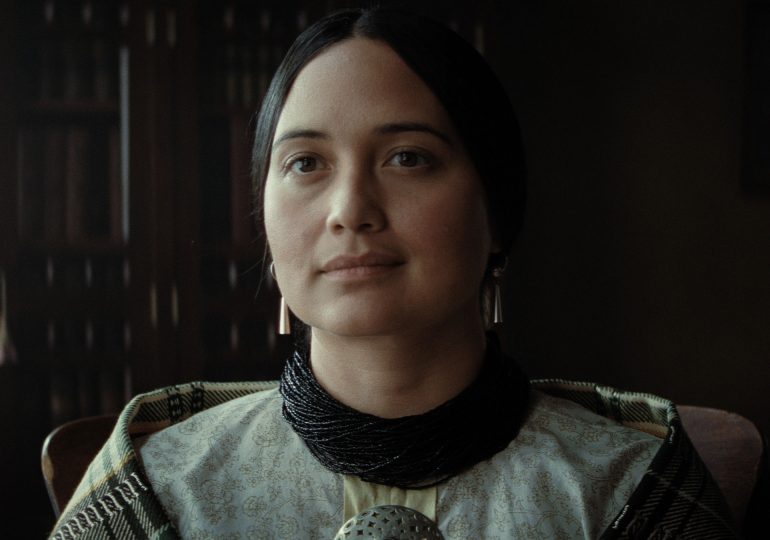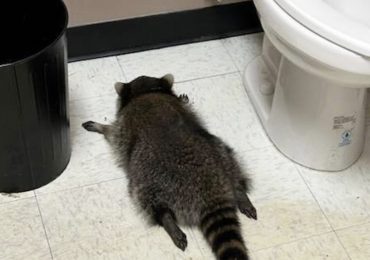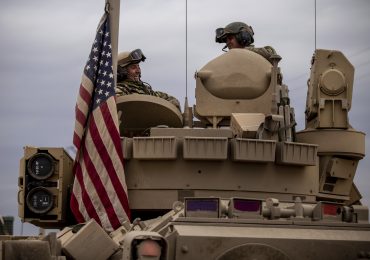Lily Gladstone made history as the first Native American woman to be nominated for an Oscar for best actress for her starring role in Martin Scorsese’s Killers of the Flower Moon.
In the film, which is also nominated for Best Picture, Gladstone plays Mollie, an Osage woman whose family members are murdered in an attempt to steal their fortunes in the oil-rich Oklahoma region. Tuesday’s nomination comes three weeks after Gladstone, a native of Montana’s Blackfeet reservation, became the first indigenous person to win a Golden Globe for best actress and marked the occasion by referencing Blackfeet language onstage as part of her Jan. 7 acceptance speech.
[time-brightcove not-tgx=”true”]
While Gladstone’s nomination is groundbreaking, there’s a history of indigenous representation at the Oscars. Gladstone is the second actress of indigenous descent to be nominated for a best actress Academy Award. The first was Yalitza Aparicio for Roma (2018), who was raised by parents of indigenous descent in Tlaxiaco, Mexico. She was on the TIME’s 2019 list of the world’s most influential people, with Roma director Alfonso Cuarón writing, “She focuses on being a force of change and empowerment for indigenous women, embracing the symbolic value of what she has done and carrying that responsibility with dignity and grace.”
Cimarron, a story about the colonization of Cherokee land, was the first movie about Native Americans to win Best Picture in 1931. Like Killers of the Flower Moon, it takes place in Osage, Oklahoma, and features a storyline about a newspaperman who “loses a chance to be governor because he will not connive with politicians who are cheating the Indians out of their oil profits,” as TIME described the plot when the movie came out. A few years later, the 1934 Academy Awards ceremony was hosted by a Native American from Oklahoma, Will Rogers, who was of Cherokee descent.
Decades later, Dan George was nominated for Best Actor in a Supporting Role for Little Big Man (1970), in which he played a wise Cheyenne tribal leader who mentors the white main character. George himself had been a tribal leader, serving as chief of British Columbia’s Tse-lal-watt tribe before he went into acting in his 60s. George hoped his Hollywood role could make an impact off screen. As he said in a TIME profile ahead of the 1971 Oscars, “If you think deeply on the relationship of the white boy and his Indian grandfather it shows the worth of integration. That is what we’re doing today and what I’ve dedicated my life to: the integration of Indians with the white man.” He was also adamant that Native Americans should play themselves in roles. “A white man just does not know how to be an Indian,” he once said, according to TIME’s 1981 obituary of George. “A white man cannot understand what it is that goes on in an Indian’s mind.”
Almost exactly twenty years later, Oneida Indian Graham Greene was nominated for Best Actor in a Supporting Role for Dances with Wolves (1990). The film was also the second about Native Americans to win best picture. In the movie, Lieutenant John J. Dunbar (Kevin Costner), who fought for the Union during the Civil War, lives with the Lakota Sioux and learns about their culture from Kicking Bird (Greene). A 1991 Entertainment Weekly article featured his brief answers to questions about the significance of his nomination: “How does it feel to be nominated for an Academy Award? ‘Good.’ What’s it like working with Kevin Costner? ‘Fine.’ Will Dances With Wolves help change the way Hollywood portrays Native Americans? ‘Maybe.’”
Gladstone is a rare example of a Native American who plays a Native American character in a Hollywood film, and an even rarer example of a Native American woman playing a strong Native American woman character, according to Monica Roxanne Sandler, a film historian at Emory University. In the early history of Westerns, Hollywood was better known for casting white actors play indigenous roles and perpetuating false stereotypes of Native Americans as savages waiting to be civilized. On the big screen, if Native American men got a speaking part, they tended to be “giving sage wisdom to white characters,” while Native American women are “silent,” according to Sandler. Sandler says the question will be whether Gladstone’s nomination will be “a new opening for more indigenous representation or, as often been the case, a ‘one-off.’” She says she’s also looking to see whether Gladstone’s nomination opens up any opportunities to play contemporary Native Americans on tribal lands, as opposed to the more typical period pieces.
Gladstone, like George, hopes that her wins and nominations will pave the way for more Native American movies starring Native Americans. As she put it in her Golden Globes acceptance speech, “This is for every little rez kid, every little urban kid, every little Native kid who has a dream, who is seeing themselves represented and our stories told by ourselves in our own words with tremendous allies and tremendous trust with and from each other.”
Leave a comment








